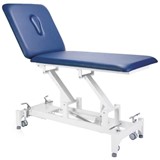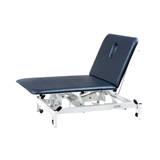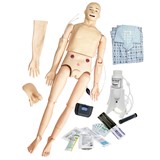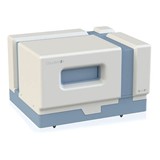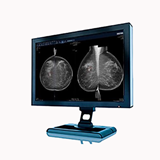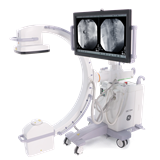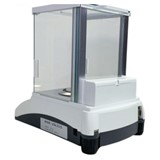Discover the pros and cons of leasing vs buying medical equipment in Australia. Learn how to choose the best financing option for your clinic’s cash flow, tax benefits, and technology needs.
Key takeaways
- Leasing flexibility: Leasing medical equipment can offer 100% financing, preserve cash flow, and allow easy access to the latest technology with minimal upfront costs. Many leases are approved within 24–72 hours.
- Buying ownership: Purchasing medical equipment can cost more upfront, but long-term costs are usually lower, with tax depreciation benefits and no ongoing lease obligations.
- Average equipment costs: High-value machines like MRI scanners can range from $200,000 to $1.2 million, while smaller items like ECG machines may cost between $3,000 and $20,000.
- Tax and accounting implications: Leased equipment is often considered an operating expense, while purchased equipment is a capital asset and may attract immediate asset write-off under Australian Taxation Office (ATO) guidelines.
- Upgrade cycles: Clinics leasing equipment benefit from easier upgrade paths every 3–5 years, making it suitable for fast-evolving technologies.
- Resale and maintenance: Purchased equipment can be resold, but buyers are responsible for repairs, maintenance, and asset depreciation.
Introduction
For Australian medical clinics, deciding between leasing and buying medical equipment is a crucial financial decision that affects cash flow, technology adoption, compliance, and long-term growth. Whether you're starting a new practice, expanding your clinic, or upgrading outdated devices, this guide explores the pros and cons of both leasing and buying, tailored to the Australian healthcare landscape. We'll cover financing options, tax considerations, equipment costs, and provide actionable insights to help you make an informed choice.
Understanding the basics
What is leasing?
Leasing medical equipment involves entering into a contract with a financier or equipment supplier that allows your clinic to use the equipment over a fixed term in exchange for regular payments.
Common types of leases:
- Operating lease: Short-term use; equipment is returned at lease end.
- Finance lease: Long-term arrangement; ownership may transfer after final payment.
What is buying?
Buying involves outright purchase, either through available capital or financing options such as:
- Chattel mortgage
- Equipment loan
- Hire purchase
Costs and cash flow implications
Buying: Pros and cons
Pros:
- No ongoing lease payments: One-time purchase leads to long-term savings.
- Ownership and equity: Equipment becomes a clinic asset.
- Depreciation benefits: Claim capital works depreciation.
Cons:
- High upfront cost: Can reduce cash reserves.
- Obsolescence risk: Technology may become outdated.
- Maintenance costs: Full responsibility for servicing and breakdowns.
Leasing: Pros and cons
Pros:
- Preserve working capital: Free up cash for operations and marketing.
- Fixed monthly payments: Predictable budgeting.
- Technology upgrades: Avoid obsolete devices with newer models.
Cons:
- No ownership: Equipment must be returned or bought out.
- Cumulative cost: May end up paying more over time.
- Usage restrictions: Some contracts limit use or modification.
Real-world example: Leasing a $60,000 ultrasound machine might cost $1,250/month over 5 years, totalling $75,000. Buying it outright would save $15,000 but require capital upfront.
Tax advantages and accounting treatment
Leasing
- Payments are typically 100% tax-deductible as an operating expense (ATO, 2024).
- Equipment does not appear on the balance sheet (in operating leases).
- No GST upfront on full equipment value; only paid on monthly payments.
Buying
- Eligible for instant asset write-off up to $20,000 (as of 2024–25 for small businesses under $10 million turnover).
- GST credit can be claimed immediately (for GST-registered businesses).
- Depreciation benefits via Division 40 (ATO guidelines).
Equipment types and their suitability
- MRI scanner ($800,000 – $1.2 million): Best suited for leasing or financing due to its high upfront cost and the rapid pace of technological advancements in diagnostic imaging.
- ECG machine ($3,000 – $20,000): Typically best to buy outright, as these devices are relatively affordable and have a long usability life with minimal need for frequent upgrades.
- Dental chairs ($10,000 – $50,000): Can be leased or purchased, depending on your clinic’s cash flow and stage of growth. Leasing may suit newer clinics, while buying may be more cost-effective for established practices.
- Vital signs monitors ($4,000 – $12,000): Ideal for outright purchase, given their lower cost and low risk of technological obsolescence.
- Ultrasound machines ($35,000 – $80,000): Often better to lease or finance, especially since mid-range diagnostic equipment tends to evolve frequently, requiring regular updates to maintain competitiveness and accuracy.
- Defibrillators ($3,000 – $6,000): Best to buy, as they’re relatively inexpensive and have a long service life, making ownership a more economical choice.
Flexibility and upgrade options
Leasing
- Flexible end-of-term options: return, extend, or upgrade.
- Useful for equipment with short innovation cycles (e.g., diagnostic imaging).
- Ideal for start-ups or rapidly scaling clinics.
Buying
- Best for equipment with long service life.
- Requires reinvestment for upgrades.
- Better for clinics that want asset control and customisation.
Maintenance, support and warranties
Leasing
- Often includes maintenance contracts.
- Equipment is replaced or repaired under agreement.
- No resale value, but fewer ownership burdens.
Buying
- Full responsibility for maintenance and repairs.
- May negotiate extended warranties.
- Equipment can be sold to recoup some value.
Compliance and accreditation impacts
When deciding whether to lease or buy medical equipment, compliance is a non-negotiable factor—especially for devices regulated under Australian law. Failure to meet these standards can result in failed audits, accreditation delays, or even legal penalties.
Regulated medical devices require strict compliance
For equipment that directly affects patient diagnosis, treatment, or infection control—such as diagnostic imaging machines, sterilisation units, and infusion pumps—clinics must ensure the device:
- Is registered on the Australian Register of Therapeutic Goods (ARTG) under TGA regulations
- Complies with ISO 13485:2016 (medical device quality management systems)
- Is installed, used, and maintained according to manufacturer-approved protocols
- Has traceable records for calibration, maintenance, software updates, and operator training
Leasing: built-in compliance support
Leasing from reputable providers often streamlines these compliance responsibilities. Key advantages include:
- TGA-registered equipment only: Leasing companies generally supply only compliant equipment, reducing legal risk
- Pre-filled audit documentation: Maintenance logs, compliance certificates, and service reports are typically provided and kept up to date
- Maintenance bundled in contracts: Many leasing agreements include scheduled servicing and calibration as part of the monthly fee
- Support for practice accreditation audits: Leasing companies often assist clinics preparing for NSQHS or ADA audits by supplying up-to-date compliance documentation
Buying: full responsibility lies with the clinic
When buying outright, especially from overseas or non-specialist suppliers, compliance becomes the clinic’s sole responsibility:
- Verify TGA registration: Not all imported equipment is legally registered for therapeutic use in Australia
- Maintain documentation: You’ll need to organise and retain all calibration certificates, maintenance logs, and training records
- Budget for compliance costs: Third-party servicing, calibration, and software validation may add to your long-term ownership costs
- Audit preparation burden: Accreditation bodies such as AGPAL or QIP may require detailed equipment compliance records during periodic audits
Hidden costs and pitfalls to avoid
Even well-structured equipment deals can carry unexpected costs. Here are key traps to watch out for when leasing or buying medical equipment in Australia.
Leasing traps:
- Hidden admin or setup fees not disclosed in advertised pricing
- Excess usage penalties, especially with diagnostic machines (e.g., per scan or report fees)
- Mandatory end-of-lease servicing charges or cleaning fees
- Unclear ownership at lease end, particularly with operating leases
- Residual value disputes if equipment is damaged or obsolete
Buying risks:
- Cash flow strain from large upfront purchases without finance buffer
- Maintenance and repair costs not budgeted after warranty expiry
- Depreciation risk if tech becomes outdated faster than planned
- Difficult resale if the device isn’t TGA-approved or lacks upgrade capability
- Poor GST treatment under AASB 16 if incorrectly capitalised
Tip: Always conduct total cost of ownership (TCO) comparisons over 3–5 years to uncover the true cost.
How to choose the right option
Consider leasing if:
- You’re a new clinic with limited capital.
- You want to maintain access to modern equipment.
- The equipment has a short upgrade cycle.
Consider buying if:
- You have cash reserves or long-term loans available.
- You prefer owning assets.
- You want control over maintenance and resale.
Decision checklist:
- What’s the total cost over 5 years?
- Can you claim depreciation or instant write-offs?
- Will technology become obsolete in 2–3 years?
- Do you need maintenance bundled into payments?
FAQs on leasing vs buying medical equipment
- Is leasing more expensive than buying in the long run?
Yes, leasing generally costs more over time due to interest and service charges. However, the trade-off is greater flexibility, lower upfront costs, and the ability to upgrade.
- Can I claim tax deductions on leased equipment?
Yes. Lease payments are fully deductible as business expenses, which helps reduce your clinic’s taxable income.
- Is leased equipment still TGA compliant?
Yes. Reputable leasing companies ensure all equipment complies with the Therapeutic Goods Administration (TGA) regulations and may provide documentation to assist with audits.
- What happens at the end of a lease?
You can typically choose to return the equipment, upgrade to a newer model, or purchase the equipment at a residual value.
- Are there low-doc finance options available?
Yes. Many lenders offer low-doc leases and loans especially for registered ABNs operating for over 12 months with good cash flow.
- Can I lease second-hand or refurbished medical equipment?
Yes. Some finance providers and equipment suppliers offer leasing options for used and refurbished devices, particularly imaging and surgical tools.
- How fast can I get approved for leasing?
In most cases, leasing approvals are completed in 24–72 hours, especially for equipment under $150,000 with simple financials.
- What are common lease terms in Australia?
Typical lease terms range from 2 to 7 years, depending on the equipment’s lifespan and usage.
- Will leasing affect my balance sheet?
Operating leases may not appear as liabilities on your balance sheet. However, under new accounting standards (AASB 16), some leases may need to be recognised.
- Can I finance equipment from overseas suppliers?
Yes, but it may require more documentation and compliance checks. Import duties and shipping must be factored into your total cost of ownership.
Final thoughts
Choosing between leasing and buying medical equipment in Australia is not a one-size-fits-all decision. It depends on your clinic’s financial health, growth plans, and the specific nature of the equipment needed. Leasing can offer flexibility and conserve cash, while buying secures ownership and long-term value. Evaluate all options carefully, consult with your accountant or finance broker, and always compare total cost of ownership over the lifecycle of the equipment.
Need more guidance? Consider consulting with a medical equipment finance specialist to help tailor the right solution for your practice.
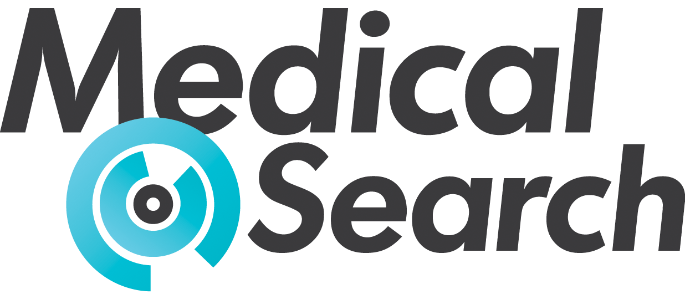


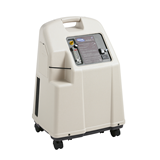

-160x160-state_article-rel-cat.png)



